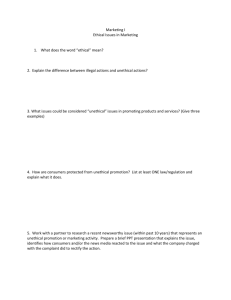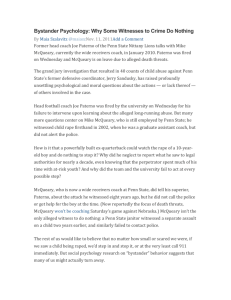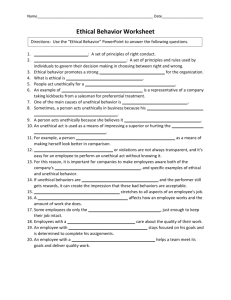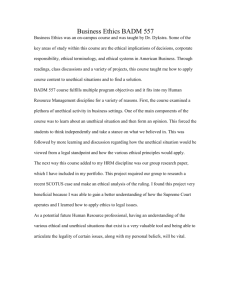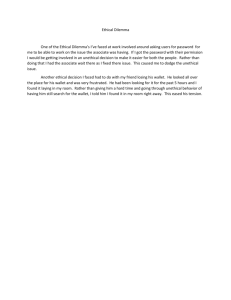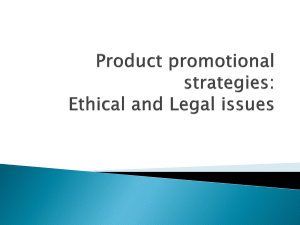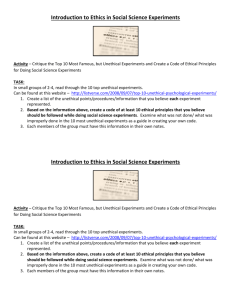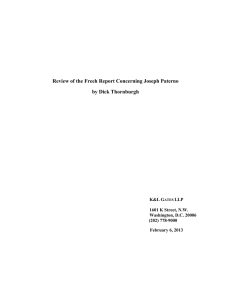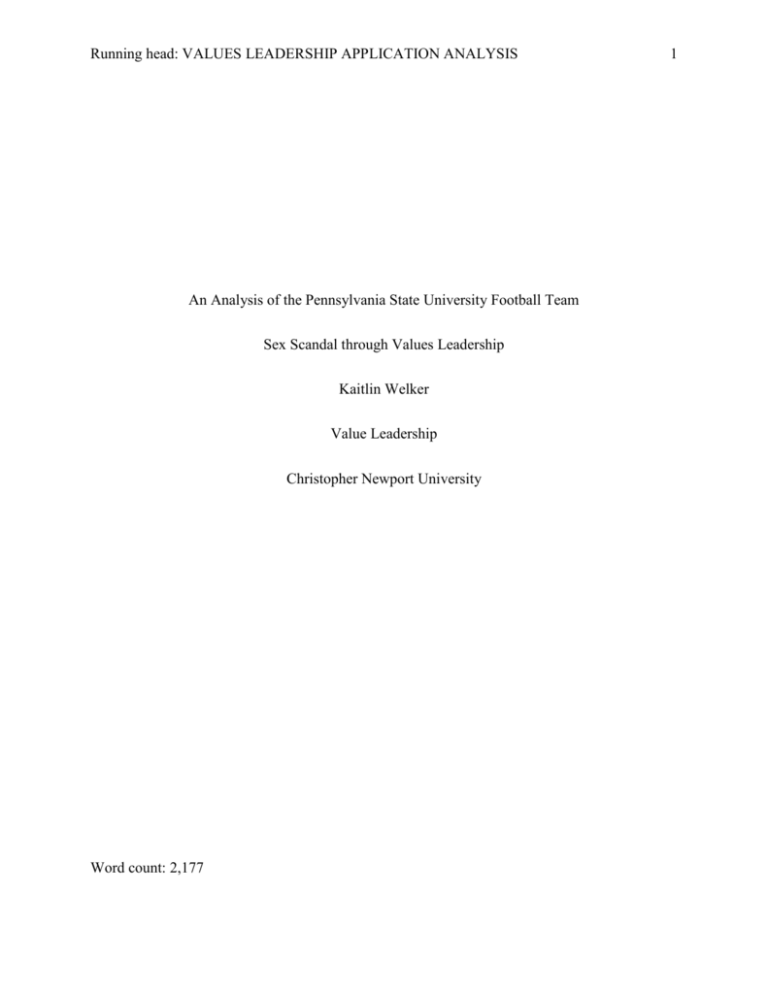
Running head: VALUES LEADERSHIP APPLICATION ANALYSIS
An Analysis of the Pennsylvania State University Football Team
Sex Scandal through Values Leadership
Kaitlin Welker
Value Leadership
Christopher Newport University
Word count: 2,177
1
VALUES LEADERSHIP APPLICATION ANALYSIS
2
Introduction
When Pennsylvania State University’s assistant football coach Jerry Sandusky was
charged and convicted of sexually abusing children, hundreds and hundreds of students, players
and fans were heartbroken. His dishonorable and revolting actions forced these loyal followers to
go from viewing this man as a hero, to regarding him as another notoriously bad leader. It would
be easy to place all the blame on Sandusky as he was the man who committed the horrendous
crimes, but the situation proves to be more complicated than that as there are more players in this
game. Joe Paterno, head coach of the Nittany Lions, was also dismissed from his coaching
position as he did not notify state police of the incidents and did not encourage action against
Sandusky even though he was aware of the sexual assault happenings (Associated Press, 2011).
Sandusky is a corrupt and disturbed leader as evidenced through his action, while Paterno
illustrates unethical and bad leadership through his lack of action. Through values leadership
analysis of ethics and values in leadership, it is simple to demonstrate that Paterno is just as
much of an unethical leader as Sandusky himself.
Case Analysis
After a three year investigation, Sandusky was convicted of 40 counts of sexual abuse to
a child that occurred over more than a ten year period (Associated Press, 2011). Multiple
witnesses had informed head coach Paterno of the horrific events they had personally seen. And
although Paterno informed the athletic director, Tim Curley, of what he had been told, no action
was taken and no real punishments were inflicted upon Sandusky (Bennett, B., Rittenberg, A.,
2011). Although the argument could be made that Paterno at least did something about the news
he had received, he did not do nearly enough to make his actions as a leader ethical and moral.
Instead of informing the state police or pursuing action against his wronged colleague, he stood
VALUES LEADERSHIP APPLICATION ANALYSIS
3
by and watched Sandusky go years without conviction or consequences of any sort (Bennett, B.,
Rittenberg, A., 2011). It was not until one of his many victims came forward that a formal
investigation began into the actions of Sandusky (Rhee, J., Wagschal, G., & Tran, L., 2012), and
even then it had been four years since the incidents began, with many more children as victims
during the timespan (Sandusky, Penn State Case Timeline). At a university where varsity
athletics are almost as important to some as academics, the head coach of the football team
serves to be more of a leader than what one would think. Because of the immense influence
Paterno had, the entire unethical situation affected more than just the victims, his team and his
staff, it affected the entire school.
Application to Values Leadership
Before analyzing Paterno as an unethical leader, it is important to understand what it is
that identifies him as a leader. In her book Ethics, the Heart of Leadership, Joanne Ciulla (2004)
explains how communal interests are mostly dependent by the leader’s decisions, “the leadership
process is therefore especially fraught with ethical challenges” (p. 47). She continues to
emphasize that because this is the case, it is extremely necessary that both the leaders and the
followers in the process have values (Ciulla, 2004, p. 55). Paterno expressed values:
achievement, unity, and pride are just a few. Milton Rokeach defines a value as an “enduring
belief that a specific mode of conduct or end-state of existence is personally or socially
preferable to an opposite or converse mode of conduct or end-state of existence” (1973, p. 5). He
continues on to express how people’s values serve as standards, allowing them to make decisions
and have opinions based on what we value as most or more important (Rokeach, 1973, p. 13). In
the situation of the sexual abuse scandal, Paterno’s values of achievement and social recognition
proved more important to him than justice. This idea of specific values that are preferred over
VALUES LEADERSHIP APPLICATION ANALYSIS
4
others allowed him to make the decision not to report Sandusky to the police, even though it was
the right and ethical thing to do.
But it is more than just obtaining values that makes one a leader over an average
subordinate, it is what they do with those values. In his article, Gilbert Fairholm states how it is a
leader’s job to “infuse the group with values” (1995, p. 68), which is what distinguishes them
from a manager. If Paterno were to only serve as a manager of the varsity football team, he
would only be concerned with monitoring performance and controlling productivity and the
overall system (Fairholm, 1995, p. 68). And while a primary aspect of his job is to increase
performance and monitor outcomes, Paterno is a leader because of the influence he has gained
over intense population and the motivation and values he instilled.
Craig Johnson (2015) outlines how bad leaders can be unethical, ineffective, or both in
his book Meeting the Ethical Challenges of Leadership (p. 3). Paterno’s multitude of
championships (Timeline: PSU Coach Joe Paterno, 2012) illustrate his effective leadership,
however his ethics are left questionable. Johnson provides the metaphor of shadows for the
negative power classifications in poor leadership. Of the six shadows he outlines, two apply to
Paterno’s role in the sex abuse scandal: mismanaged information and broken loyalties. As a
leader high up in an organization, the head coach has access to immense amount of information
concerning the players, the program and the school, even information about his other coaches.
When Paterno did not correctly handle the information given to him about Jerry Sandusky, he
proved to illustrate the shadow of mismanaged information as he created a pattern of deception
(Johnson, 2015, p. 18). The second shadow that Paterno represents is that of misplaced or broken
loyalties (Johnson, 2015, p. 22). As head coach, he gained the loyalty and trust of his players and
his school. The integrity of the football program was his primary responsibility, a responsibility
VALUES LEADERSHIP APPLICATION ANALYSIS
5
he did not uphold. By breaking these loyalties through his neglected actions, Paterno served to be
a bad leader. But poor leadership is one thing, unethical leadership is another. Johnson (2015)
expresses how unethical leaders deny having specific knowledge that they do have, withhold
important information, use information for individual benefit, violate followers’ privacy, put
information into the wrong hands, and put followers in ethical binds (p. 19). Although Paterno
did not engage in all of these practices, his inaction to tell the truth and expose the information
he obtained allows him to be an unethical leader.
The evidence shows Paterno as an unethical leader, but what was the motivation behind
conserving the information of the sexual abuse? In the seventh chapter of her book, Ciulla
explores the ethical failures of leadership and provides insight to why leaders make immoral
decisions. She states that one way to view these dilemmas is through the volitional account of
ethical failures, assuming that human behavior is self-centered (Ciulla, 2004, p. 131). This idea
expresses that leaders who make poor and unethical decisions make them out of choice, not
because they lack a moral code or understanding (Ciulla, 2004, p. 133). Paterno evidences as a
great example for morality competing with self-interest. Under the volitional view, Paterno is an
unethical leader who not only made unethical decisions, but did so with full knowledge of what
he was doing and what he meant by it. He had his own interest as a foundation for his cognitive
process, preserving the reputation of his colleague Sandusky as a coach, himself as a coach, and
the entire Pennsylvania State University varsity football program. Harvard professor Barbara
Kellerman also supports this idea that people are naturally selfish, stating that “people in a state
of nature are not, in the usual sense of the word, ‘good’” (2004, p. 15). In her book on bad
leadership, she further emphasizes the motive behind bad and unethical leadership of individual
needs and group needs (Kellerman, 2004, p. 22). In the case of the sex scandal, the individual
VALUES LEADERSHIP APPLICATION ANALYSIS
6
needs are concerned with Paterno’s reputation as a coach, while the group needs are concerned
with the reputation of the school and the football team. To add a twist into analysis of his
leadership, it is interesting to look at Paterno as a follower since part of his role in the scandal
was not pressuring higher leadership to take action. Kellerman explores moral dilemmas of
followership as well, with some of the relevant challenges including obedience and dissent
(2004, p. 25). In terms of obedience, a follower chooses when to obey. Paterno chose to ignore
the law and only partially obey both legal and moral code by not reporting the sexual abuse to
the police. His failure to speak up and hold the organization accountable is a prime example of
dissent as an unethical lack of action.
Ciulla also discusses the priority of self-interest with humans that comes from an natural
instinct as selfish beings, but in her book’s sixth chapter she additionally evaluates the role
culture plays in emphasizing these egotistical ideals (2004, p. 107). In her agreement with
Bernard Bass, she expresses how our culture strongly values the importance and priority of
individual rights, even to the extent that humans believe they have the right to do whatever they
please and no one can tell them otherwise (Ciulla, 2004, p. 112). It is this exact arrogant mindset
that leads to problems such as the sexual abuse scandal with Paterno and Sandusky. The
placement of their own personal values before those of the team and school led to an unethical
situation. This is why Ciulla articulates it is important in ethical leadership to hold people
accountable (2004, p. 116). Paterno should have held his colleagues accountable as an ethical
leader would do.
In further emphasis of the role of egotism, Rabindra Kinungo and Manuel Mendonca
(1996) in their book Ethical Dimensions of Leadership express how self-centered leaders have a
difficult time finding the difference between what is helping, and what is not harming (p. 42).
VALUES LEADERSHIP APPLICATION ANALYSIS
7
This provides a good example of the ethical failure of Paterno when it came to supporting
Sandusky’s victims. To help them would have been to persevere and bring justice to the children
who were abused, however what he did was not really anything at all. By standing by and not
taking aggressive action, he was not necessarily directly harming the children, but he was
certainly not helping them either. Kinungo and Mendonca describe this lack of assistance and
inability to take necessary risks as an opposite characteristic of good and moral leadership (1996,
p. 43). Helping was the ethical action to take, not harming and letting those children get abused
was not ethical by any means, accentuating the immoral leadership of Paterno.
Analysis of Situation
In November of 2011, Pennsylvania State University football fans across the nation were
devastated not only because of the broken loyalties and sadness of the sexual assault scandal, but
because of the loss of their hero, head coach Joe Paterno. The love and support for a man they
called “JoePa” expresses what Paterno meant to his players, to his colleagues and to his school.
The ethical dilemma is saddening, but what is even more saddening are how simple the actions
would have been to prevent such a situation from occurring in the first place. As argued, the
most ethical action Paterno could and should have taken was for him to have notified the police
and follow the investigation of Sandusky through, protecting his team and his program. If this
had been the case, the integrity of the program would have been preserved—a goal that was most
likely the top priority for the team’s coaches during this scandal. However, the argument could
be made that a large part of the problem was with the understanding of leadership in general. As
Ciulla argues that ethics are the center of the leadership process (2004, p. 4), more should be
done to help leaders with their understanding and acknowledgment of the importance of ethics. If
more studies and awareness of leadership ethics are produced, perhaps leaders in the world will
VALUES LEADERSHIP APPLICATION ANALYSIS
gain more insight as to the importance that morality and values play in effective and ethical
leadership, leading to a world full of more football championships and less sexual abuse
scandals.
Conclusion
Although Joe Paterno was not the actual criminal in the case of sexual assault at
Pennsylvania State University, his unethical actions and decision making cost him his job and
the football team their coach. His poorly prioritized values, power shadows, and self-interest
allowed for the destruction of a football legacy. The crimes and scandal of the football coaching
staff brought harm to more than just the players who were assaulted, harm that could have been
so simple to avoid. All Paterno had to do was involve the authorities and pursue justice for the
innocent children who were molested by his colleague. If Paterno had done the ethical thing and
told the truth to expose the issue, so much damage could have been prevented.
8
VALUES LEADERSHIP APPLICATION ANALYSIS
9
References
Associated Press. (2011, November 7). Two Top Officials Step Down Amid Penn State
Scandal. Fox News. Retrieved from http://www.foxnews.com/sports/2011/11/05/pennstate-ex-coach-others-charged-in-child-sex-case/
Bennett, B., Rittenberg, A. (2011, November 8). Joe Paterno Statement on Sandusky Case.
ESPN. Retrieved from http://espn.go.com/blog/bigten/post/_/id/37765/joe-paternostatement-on-sandusky-case
Ciulla, J. B. (2004). Ethics, the Heart of Leadership (2nd ed.). Westport, CT: Praeger Publishers.
Fairholm, G. W. (1995). Values Leadership: A Values Philosophy Model. International Journal
of Value-Based Management, 8, 65-77.
Johnson, C. E. (2015). Meeting the Ethical Challenges of Leadership: Casting Light or
Shadow (5th ed.). United States of America: SAGE Publications Inc.
Kanungo, R. N., & Mendonca, M. (1996). Ethical Dimensions of Leadership. United States of
America: SAGE Publications Inc.
Kellerman, B. (2004). Bad Leadership. Boston, MA: Harvard Business School Publishing.
Rokeach, M. A. (1973). The Nature of Human Values. United States of America: Free Press.
Rhee, J., Wagschal, G., & Tran, L. (2012, October 19). Sandusky Victim 1 Steps Out of
Shadows, Says Justice Took Too Long. ABC News. Retrieved from
http://abcnews.go.com/US/sandusky-victim-reveals-identity-justicelong/story?id=17511612&singlePage=true
VALUES LEADERSHIP APPLICATION ANALYSIS
Sandusky, Penn State Case Timeline. (2011, November 9). ESPN. Retrieved
from http://espn.go.com/college-football/story/_/id/7212054/key-dates-penn-statenittany-lions-sex-abuse-case
Timeline: PSU Coach Joe Paterno. (2012, July 12). ESPN. Retrieved
from http://espn.go.com/college-football/story/_/id/7208942/penn-state-nittany-lionscoach-joe-paterno-timeline
10

